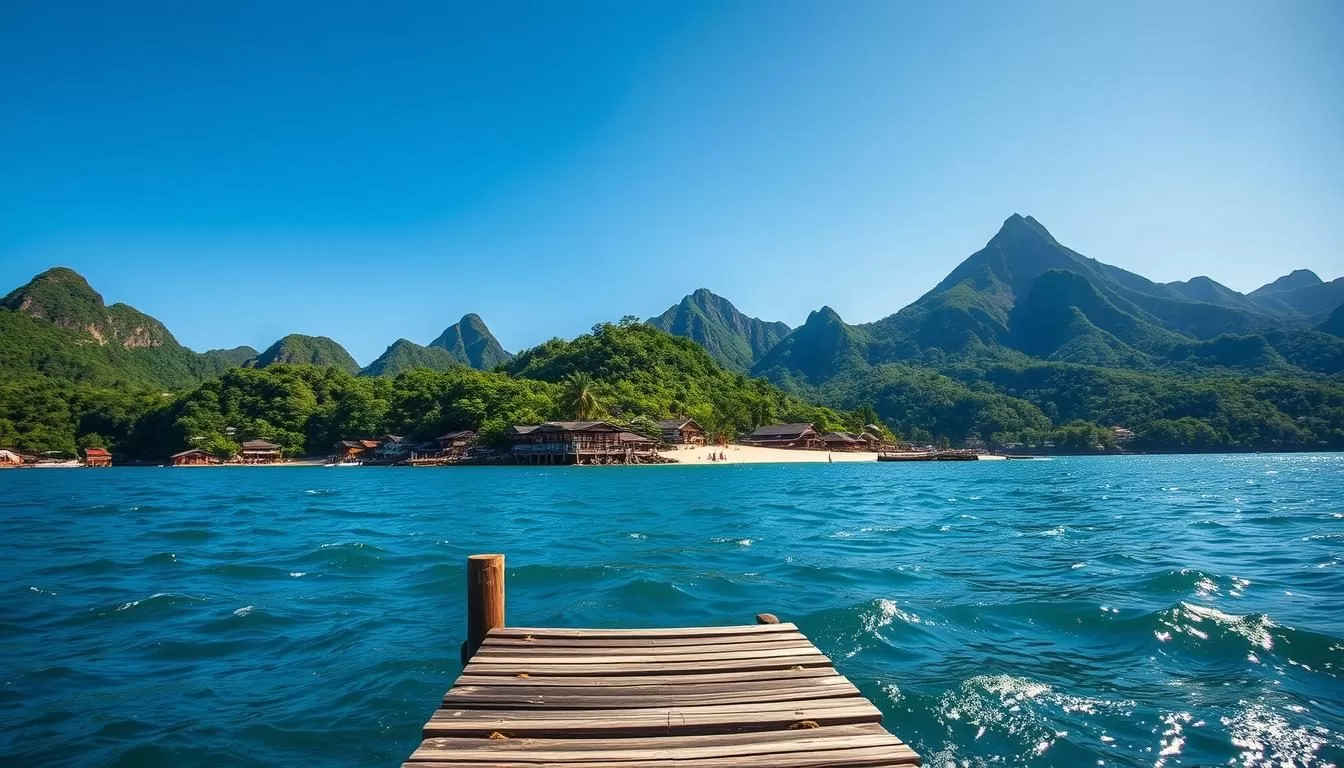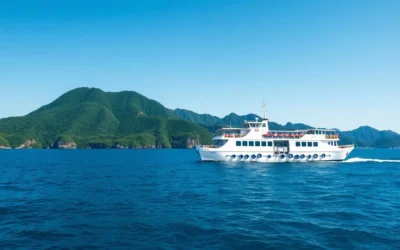✓ Accommodations ✓ Flights ✓ Rental Cars
Are you ready to explore one of Japan’s most intriguing hidden gems? The Senkaku Islands offer a unique blend of natural beauty and rich cultural heritage, making them an ideal destination for adventurous travelers seeking an authentic experience.
As you plan your trip to this captivating destination, you’ll discover a range of exciting activities and breathtaking viewpoints. From traditional boat rides to exploring the islands’ gold mining history, there’s something for every kind of traveler.
This comprehensive guide will help you navigate the top picks and make the most of your visit, whether you’re looking for a day trip or an extended stay.
Discovering the Senkaku Islands
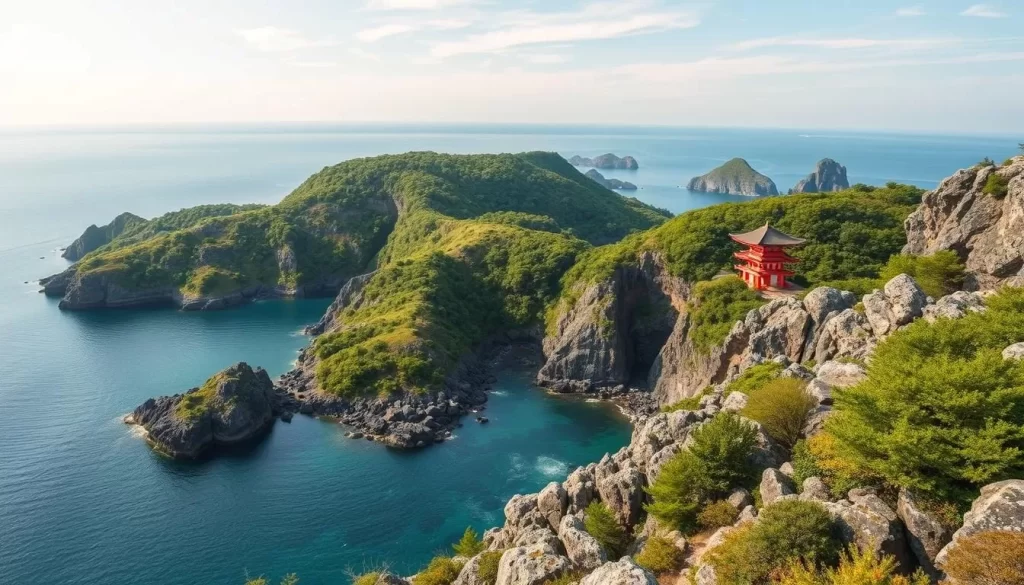
For travelers seeking an off-the-beaten-path experience in Japan, the Senkaku Islands present an intriguing opportunity to explore uncharted territories. As you venture into this lesser-known part of Japan, you’ll uncover the islands’ unique charm and significance.
Geographical Location and Significance
The Senkaku Islands are located in the East China Sea, a strategic location that has contributed to their importance over the years. These islands are not just significant for their natural beauty but also for their role in the maritime history of the region, connecting various places across East Asia.
The geographical location of the Senkaku Islands has made them crucial for maritime activities and has influenced the lives of the people living there, shaping their culture and traditions.
Historical Background
The fascinating history of the Senkaku Islands dates back hundreds of years, with evidence of human settlement and maritime activities throughout different historical periods. The islands have witnessed changing political landscapes, contributing to their complex historical narrative and cultural significance.
- The islands have been home to traditional fishing communities, with local people maintaining customs and practices that have endured for generations.
- They have served as important trading posts and navigational landmarks, connecting various places across the East Asian maritime region.
- Understanding the historical context of the Senkaku Islands enhances your appreciation of their cultural landmarks and traditional practices that you can experience today.
Planning Your Visit to Japan’s Island Regions
To make the most of your visit to Japan’s islands, such as the Senkaku Islands, it’s crucial to plan ahead, considering factors like the best time to visit and transportation options.
Best Time to Visit
The best time to visit Japan’s island regions depends on your preferences and what you want to experience. Generally, spring and autumn are considered ideal due to their mild weather. If you’re planning a trip to the Senkaku Islands, these seasons offer the best conditions for outdoor activities and sightseeing.
Transportation Options
Reaching the islands typically involves taking a ferry from mainland Japan. Services depart regularly from designated port cities. For a comprehensive road trip through Japan’s island regions, consider renting a car for flexibility, as public transportation can be limited.
The driving japan experience is enhanced with an International Driving Permit, which is required for foreign visitors. The jetfoil high-speed ferry is the quickest option, significantly reducing travel time compared to conventional ferries.
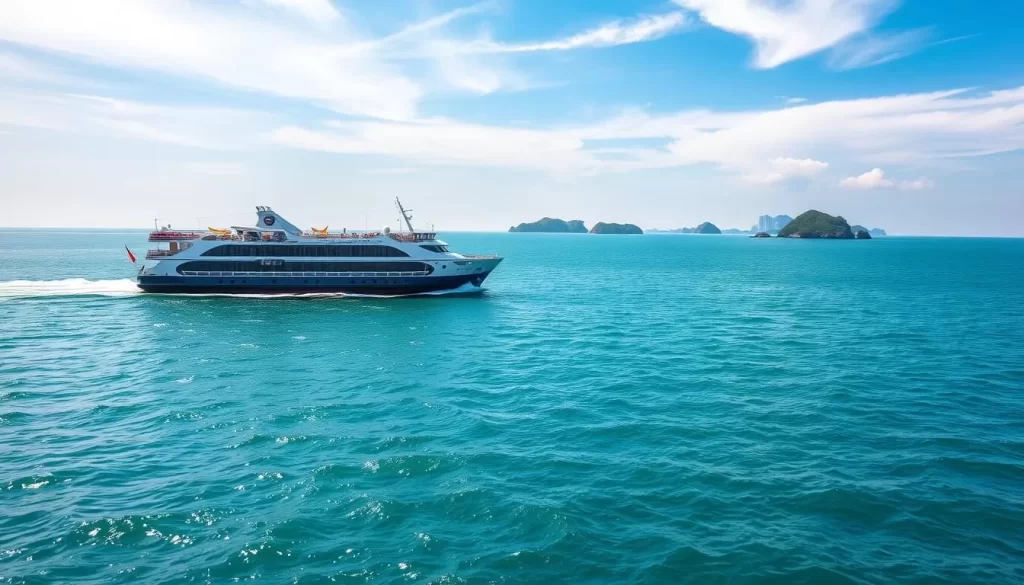
Exploring Sado Island: Japan’s Hidden Gem
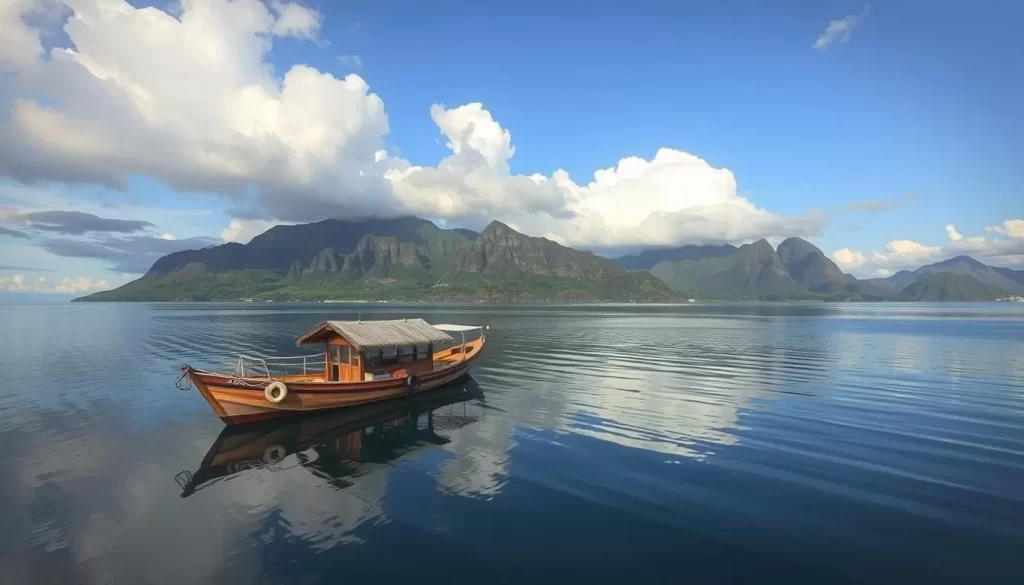
Tucked away in the Sea of Japan, Sado Island is a treasure trove of natural beauty and cultural heritage waiting to be explored. As you plan your visit, understanding how to get to this enchanting island and navigate its scenic landscapes is essential.
Getting to Sado Island
Sado Island is accessible by ferry or airplane, with the most common route being from Niigata City. Ferries operate from both Niigata Port and Ryotsu Port, offering a scenic journey to the island.
The travel time varies depending on the route and mode of transport, so it’s advisable to check the latest schedules and plan accordingly.
Navigating Around the Island
Once you arrive on Sado Island, renting a car is the most convenient way to explore its diverse attractions. The island boasts well-maintained roads that circle its coast and cut through its center, providing access to remote beaches, mountain viewpoints, and cultural sites.
Some key points to consider when navigating the island include:
- Renting a car gives you the freedom to explore at your own pace.
- The road network is generally well-maintained, but can be winding in mountainous areas.
- Driving in Japan follows left-side traffic rules, a crucial detail for visitors from countries with right-side driving.
- The central area of Sado Island is home to many major attractions, making it a good base for your explorations.
- For those not driving, limited bus services are available, though schedules can be infrequent.
- Using GPS navigation or offline maps is highly recommended due to potentially spotty cellular service in remote areas.
By understanding your transportation options and planning ahead, you can make the most of your visit to Sado Island and enjoy all it has to offer, from its stunning landscapes to its rich cultural heritage, all while experiencing the unique aspects of driving in Japan.
Traditional Experiences on Sado Island
Sado Island offers a range of traditional experiences, from unique boat rides to visits to historic villages, that will enrich your understanding of Japan’s cultural past. As you explore the island, you’ll have the opportunity to engage with its rich history and heritage.
Riding the Tarai Bune Tub Boats
One of the unique experiences on Sado Island is riding the Tarai Bune tub boats. These traditional boats are a part of the island’s maritime heritage. You can enjoy a serene ride while taking in the beautiful scenery around you. The Tarai Bune boats are an integral part of Sado Island’s cultural identity, offering a glimpse into the lives of the people who once relied on them.
Visiting Shukunegi Village
Shukunegi Village is a must-visit place on Sado Island, known for its densely packed wooden houses that date back to the late 18th century. As you walk through the village, you’ll notice the narrow alleyways and the unique architecture of the houses, which were built using the same techniques and materials as traditional ships. The village is a fascinating glimpse into Japan’s maritime past, with the famous Triangle House (Sankakuya) being a standout structure. Here are some highlights of Shukunegi Village:
- The village offers a glimpse into Japan’s maritime past with its wooden houses.
- The narrow winding streets make it one of the most photogenic places on Sado Island.
- Many houses date back to the late 18th century, showcasing the village’s historical significance.
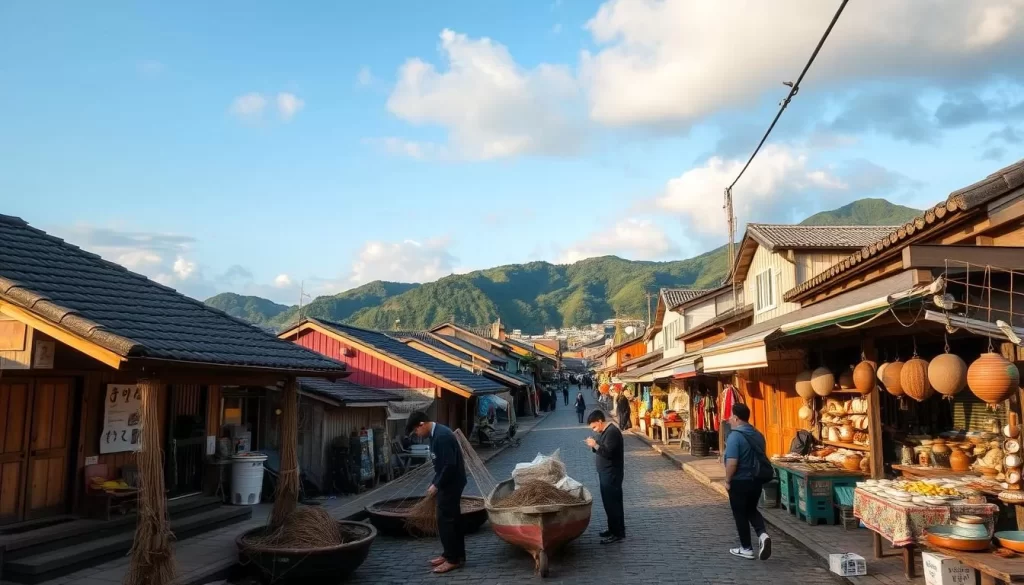
Gold Mining History and Attractions
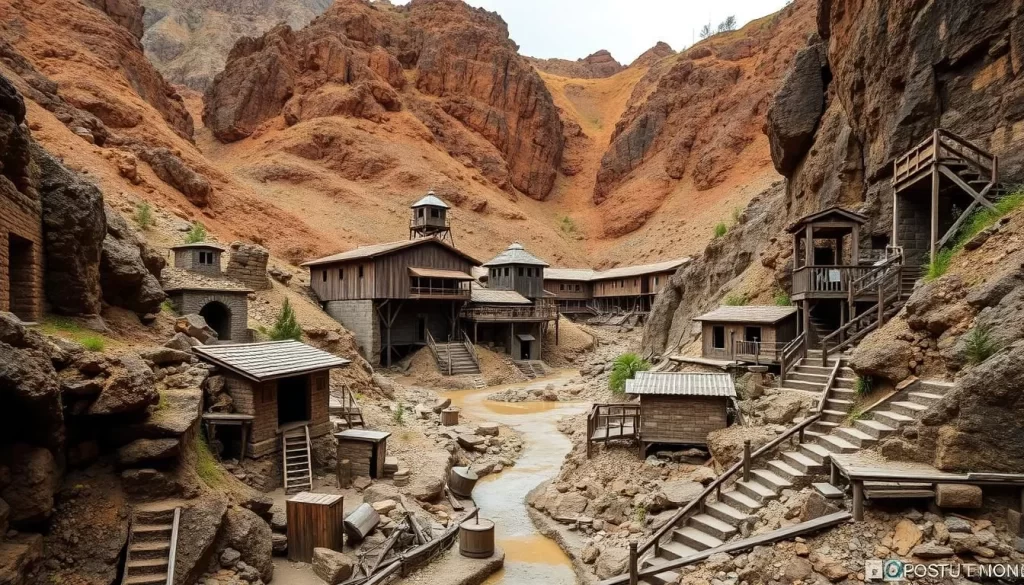
With a history spanning over a millennium, Sado Island’s gold mines are a fascinating destination for visitors. The island’s gold mining heritage is a significant part of Japan’s history and a major tourist attraction.
Sado Kinzan Gold Mines
The Sado Kinzan Gold Mines are a testament to the island’s rich mining history. As one of Japan’s most significant gold-producing mines, it offers a glimpse into the country’s industrial past. Visitors can explore the mines and learn about the extraction processes used during its operational years.
Nishimikawa Gold Park
The Nishimikawa Gold Park provides a unique, hands-on experience, allowing visitors to pan for gold using traditional methods. This facility is located on the site of the historic Nishimikawa Gold Mine, which boasts over a thousand years of gold extraction history.
At Nishimikawa Gold Park, you can try your hand at gold panning, an activity that costs 1,000 JPY per person. The park provides all necessary equipment, including sand-filled troughs where you can sift through the sand to find tiny gold flakes. While you may not strike it rich with large gold nuggets, the experience is fun, especially with family or friends. You can even preserve your findings in a small glass pendant available for purchase as a unique souvenir.
- Nishimikawa Gold Park offers a hands-on gold panning experience at a historic mine site.
- Try traditional gold panning techniques used by early prospectors.
- The gold panning activity costs 1,000 JPY per person and includes necessary equipment.
- Preserve your gold flakes in a small glass pendant available for purchase.
Natural Wonders of Japan’s Islands
From scenic viewpoints to lush forests, Japan’s islands offer a diverse range of natural attractions. You can explore the breathtaking views and unique wildlife that make these islands a must-visit destination.
Senkakuwan Bay Viewpoints
The Senkakuwan Bay viewpoints offer stunning vistas of the surrounding waters and landscape. Visitors can enjoy panoramic views and take in the natural beauty of the area. The bay is known for its crystal-clear waters and picturesque scenery, making it a perfect spot for photography.
Toki Forest Park and Bird Watching
The Toki Forest Park is a conservation center for the Japanese Crested Ibis, a critically endangered species. You can observe these magnificent birds in specially designed enclosures and learn about the conservation efforts through educational exhibits. Some key features of the park include:
- Opportunities to spot wild tokis in the surrounding rice fields from the observation tower at Toki Terrace.
- Educational exhibits about the cultural significance of tokis in Japanese history and art.
- A chance to see numerous other bird species in the forest park and surrounding areas.
The reintroduction of tokis to Sado Island is considered one of Japan’s most successful wildlife conservation projects, making the Toki Forest Park a significant destination for bird watching enthusiasts.
Senkaku Islands, Japan: Best Things to Do – Top Picks
Your journey to the Senkaku Islands will be filled with memorable moments, from marine activities to photography opportunities. The islands offer a unique blend of natural beauty, cultural experiences, and adventure.
Boat Tours and Marine Activities
One of the top things to do on the Senkaku Islands is to take a boat tour. You can enjoy a glass-bottom boat ride on a nice day, offering a glimpse into the underwater world. Late May to early June is a particularly popular time to visit, as the day lilies are in full bloom, adding to the island’s charm.
Marine activities abound, with opportunities to explore the island‘s coastline and marine life. Whether you’re looking for relaxation or adventure, the Senkaku Islands have something for everyone.
Photography Opportunities
The Senkaku Islands are a photographer’s paradise, with numerous places to capture stunning images. You can take breathtaking photos during the golden hour at dawn or dusk when the light casts warm hues across the island‘s distinctive rock formations.
- The traditional tub boats against the backdrop of red bridges create iconic images that look like they belong in a Japanese painting.
- Wildlife photographers can capture the rare toki birds in their natural habitat or in flight against blue skies.
- The changing seasons transform the island landscapes, from cherry blossoms in spring to vibrant autumn foliage, offering different moods and colors throughout the year.
- Historic mining structures, particularly when illuminated at night, provide fascinating industrial subjects that contrast with the natural beauty found in other places around the islands.
With so many opportunities, you’ll have a great day capturing the essence of the Senkaku Islands.
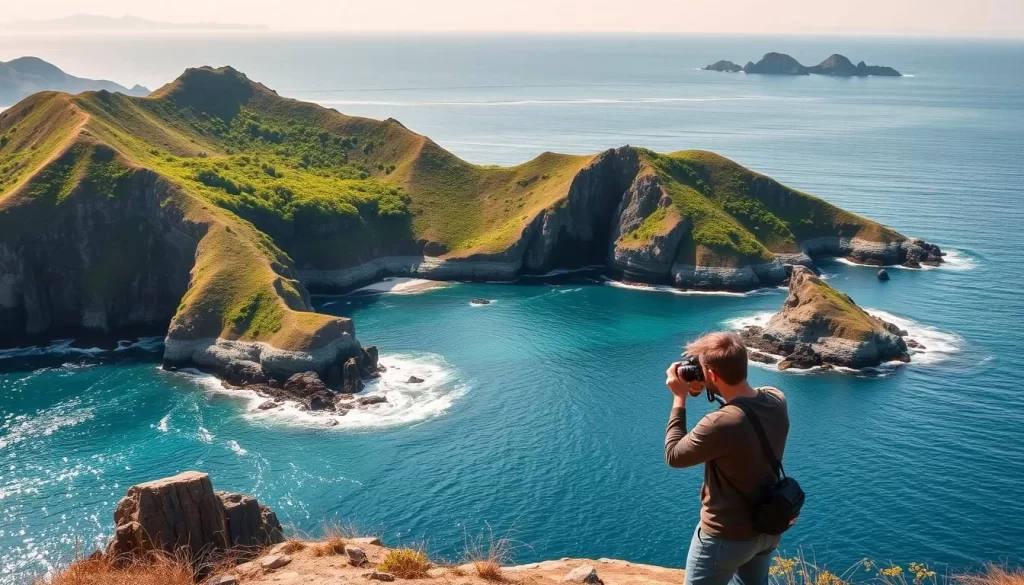
Cultural Immersion in Japan’s Island Communities
As you step into Japan’s island communities, you’re not just visiting a place, you’re experiencing a rich cultural heritage. The islands, such as Sado, offer a unique blend of traditions and modern life, making your visit a memorable experience.
Local Festivals and Traditions
Sado Island, known for its seafaring history, hosts various festivals that reflect its cultural depth. The village of Shukunegi, with its shipbuilding legacy, is a great place to witness local traditions firsthand. You can participate in or observe festivals that have been part of the island’s identity for centuries.
| Festival | Location | Description |
|---|---|---|
| Sado Festival | Sado Island | Celebrates the island’s history and culture with traditional dances and performances. |
| Shukunegi Festival | Shukunegi Village | Showcases the village’s shipbuilding heritage with model ships and local food. |
Authentic Cuisine and Dining
The local cuisine on Sado Island is dominated by seafood, with dishes prepared according to centuries-old traditions. You can enjoy fresh catches of the day at many local restaurants, often paired with rice grown in the island’s fertile fields. For a true experience, dine at family-run establishments where recipes have been passed down through generations, making you feel at home. Savoring food in one of these settings is a taste of one Japan that you won’t soon forget.
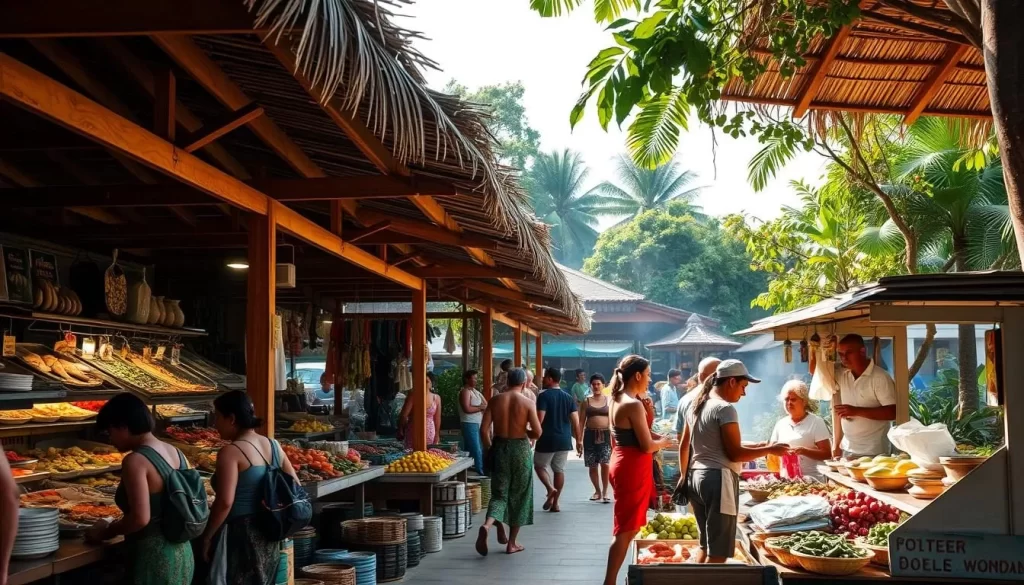
Accommodation Options in the Region
When planning your trip to Sado Island, Japan, choosing the right accommodation is crucial for a comfortable and enjoyable stay. The region offers a diverse range of options, from traditional ryokans to modern hotels and guesthouses, each providing a unique experience.
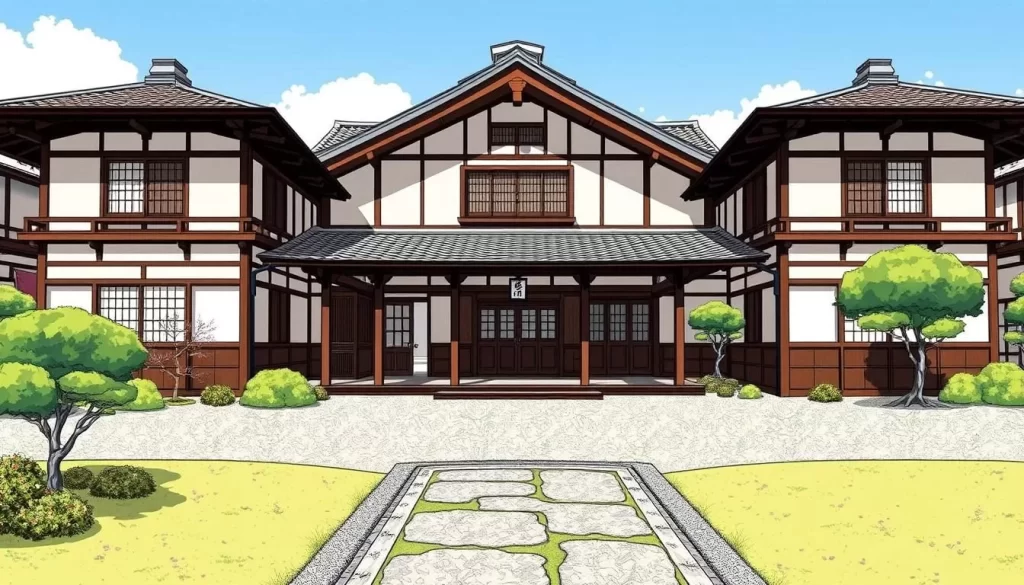
Traditional Ryokans
For a truly authentic Japanese experience, consider staying at a traditional ryokan. These establishments offer a glimpse into the country’s rich cultural heritage, with features like tatami-mat rooms, sliding doors, and communal baths. Many ryokans are located in serene, natural settings that enhance the overall tranquility of your stay. For instance, some ryokans are surrounded by lush gardens or offer views of the nearby sea.
When opting for a ryokan, consider its location carefully. Some are situated in quiet, rural areas, while others are closer to port cities, making it easier to access local amenities.
Modern Hotels and Guesthouses
If you would like to combine modern comforts with the charm of Japanese hospitality, the area around Sado Island has numerous hotels and guesthouses. These accommodations range from boutique properties with unique designs to more conventional hotels offering a range of amenities. Many of these establishments are located in the city or near the port, providing easy access to local attractions and transportation.
Some modern hotels feature panoramic ocean views, with private balconies where you can enjoy the sunrise or sunset. For longer stays, apartment-style accommodations with kitchenettes are available, giving you the flexibility to prepare simple meals using local ingredients.
Day Trips and Nearby Attractions
Japan’s diverse regions offer a variety of day trips and nearby locations to discover. When planning your visit to the Senkaku Islands, consider exploring other fascinating destinations in the area.
Izu Peninsula Highlights
The Izu Peninsula, located on the mainland near Tokyo, is a great day-trip destination. You can enjoy beautiful coastlines and hot springs. The peninsula is known for its stunning natural beauty, including rugged coastlines and picturesque villages. You can explore the scenic viewpoints and enjoy outdoor activities like hiking and surfing. The Izu Peninsula is also famous for its wasabi farms, offering a unique culinary experience. With its proximity to Tokyo, it’s an ideal getaway for those looking to explore beyond the city. The peninsula’s diverse landscapes and attractions make it a perfect day trip, showcasing the variety of locations Japan has to offer.
Kyushu Island Experiences
Kyushu Island, Japan’s third-largest island, is bursting with beauty and historical gems to uncover. Its largest city, Fukuoka, is actually closer to Seoul (South Korea) than it is to Tokyo, which has influenced the island’s cultural traditions. You can explore the dramatic Takachiho Gorge, with its sheer basalt cliffs and emerald waters, by rental boat. The island’s coast features unique rock formations and scenic viewpoints, with the western coast offering spectacular sunset views across the East China Sea. Historic places like Nagasaki provide insights into Japan’s complex relationship with international trade and cultural exchange. The hot spring town of Beppu, with its famous “Hells” (jigoku), offers a unique perspective on Japan’s volcanic activity. Kyushu’s cultural and geographical diversity, shaped by its proximity to South Korea and China, makes it worth visiting for travelers seeking to explore multiple islands during their Japanese adventure.
Conclusion: Making the Most of Your Japanese Island Adventure
Discover the unspoiled charm of the Senkaku Islands, a hidden gem in Japan’s island regions. As a tourist, you’ll appreciate the authentic experiences that these islands offer, which are still unspoiled today. Creating a flexible itinerary allows you to interact with local people and discover unexpected treasures.
Consider combining your visit with other nearby island destinations to create a comprehensive Japanese island-hopping trip. The memories you bring home will be treasured souvenirs. By being a responsible tourist and following a well-planned guide, you’ll help preserve the natural beauty and cultural authenticity of these islands, showcasing one Japan that is Japan made.
The above is subject to change.
Check back often to TRAVEL.COM for the latest travel tips and deals.
